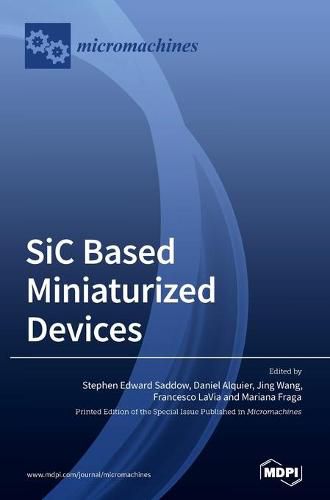Readings Newsletter
Become a Readings Member to make your shopping experience even easier.
Sign in or sign up for free!
You’re not far away from qualifying for FREE standard shipping within Australia
You’ve qualified for FREE standard shipping within Australia
The cart is loading…






This title is printed to order. This book may have been self-published. If so, we cannot guarantee the quality of the content. In the main most books will have gone through the editing process however some may not. We therefore suggest that you be aware of this before ordering this book. If in doubt check either the author or publisher’s details as we are unable to accept any returns unless they are faulty. Please contact us if you have any questions.
MEMS devices are found in many of today’s electronic devices and systems, from air-bag sensors in cars to smart phones, embedded systems, etc. Increasingly, the reduction in dimensions has led to nanometer-scale devices, called NEMS. The plethora of applications on the commercial market speaks for itself, and especially for the highly precise manufacturing of silicon-based MEMS and NEMS. While this is a tremendous achievement, silicon as a material has some drawbacks, mainly in the area of mechanical fatigue and thermal properties. Silicon carbide (SiC), a well-known wide-bandgap semiconductor whose adoption in commercial products is experiening exponential growth, especially in the power electronics arena. While SiC MEMS have been around for decades, in this Special Issue we seek to capture both an overview of the devices that have been demonstrated to date, as well as bring new technologies and progress in the MEMS processing area to the forefront. Thus, this Special Issue seeks to showcase research papers, short communications, and review articles that focus on: (1) novel designs, fabrication, control, and modeling of SiC MEMS and NEMS based on all kinds of actuation mechanisms; and (2) new developments in applying SiC MEMS and NEMS in consumer electronics, optical communications, industry, medicine, agriculture, space, and defense.
$9.00 standard shipping within Australia
FREE standard shipping within Australia for orders over $100.00
Express & International shipping calculated at checkout
This title is printed to order. This book may have been self-published. If so, we cannot guarantee the quality of the content. In the main most books will have gone through the editing process however some may not. We therefore suggest that you be aware of this before ordering this book. If in doubt check either the author or publisher’s details as we are unable to accept any returns unless they are faulty. Please contact us if you have any questions.
MEMS devices are found in many of today’s electronic devices and systems, from air-bag sensors in cars to smart phones, embedded systems, etc. Increasingly, the reduction in dimensions has led to nanometer-scale devices, called NEMS. The plethora of applications on the commercial market speaks for itself, and especially for the highly precise manufacturing of silicon-based MEMS and NEMS. While this is a tremendous achievement, silicon as a material has some drawbacks, mainly in the area of mechanical fatigue and thermal properties. Silicon carbide (SiC), a well-known wide-bandgap semiconductor whose adoption in commercial products is experiening exponential growth, especially in the power electronics arena. While SiC MEMS have been around for decades, in this Special Issue we seek to capture both an overview of the devices that have been demonstrated to date, as well as bring new technologies and progress in the MEMS processing area to the forefront. Thus, this Special Issue seeks to showcase research papers, short communications, and review articles that focus on: (1) novel designs, fabrication, control, and modeling of SiC MEMS and NEMS based on all kinds of actuation mechanisms; and (2) new developments in applying SiC MEMS and NEMS in consumer electronics, optical communications, industry, medicine, agriculture, space, and defense.